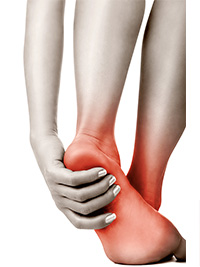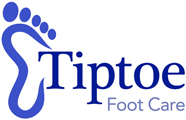A surprising number of problems can be caused throughout the body (including back pain, neck pain, sore knees or hip pain) by foot and ankle issues that affect your posture (how you stand) and the way you walk. Persistent soreness can indicate problems in the toes and feet, as can a limited range of movement.
At Tiptoe Foot Care our trained podiatrists will identify this for you by undertaking a biomechanics assessment (including an individual gait analysis) and we can resolve a large number of problems with foot mobilisation (see below), advice on orthotics (insoles) or within our pain and movement clinic.
Biomechanics assessments
Biomechanics is a part of podiatry that analyses the structure and function of the bones in your feet and legs. Primarily it assesses the muscles and joints and how they act when you walk and move.
In a biomechanics assessment we will assess your gait (your walking pattern) and posture and determine how best to support you. We generally prefer to fix foot and ankle issues where we can in order to give you natural mobility, rather than relying on artificial support if it isn’t necessary. That way, your pain is reduced whatever you are wearing on your feet!
 About the biomechanics assessment:
About the biomechanics assessment:
- The assessment will last approximately 30 minutes
- Please bring a pair of shorts/loose clothing so that we can view your lower leg in action.
- You will be assessed sitting, standing and walking
- Please bring a well worn pair of trainers/shoes with you.
Following your assessment you will then be given:
- advice on footwear,
- stretching and strengthening exercises, and
- advice on whether you would be expected to benefit from orthotics.
Foot mobilisation
Joint and soft tissue mobilisation can be used to treat acute and chronic pains, restrictions and instability in the foot and lower limb.
In soft tissue mobilisation we massage and stretch specific structures including ligaments, fascia, muscles and their tendons to improve their strength and function or elasticity. If you have had an injury, then scarring and interlocking of muscle fibres can reduce the natural gliding motion but by working into these structures we can improve your ranges of motion and help to re-activate a muscle. This can be used alongside acupuncture in achieving similar results.
Joint mobilisation works by gently working a joint close to its end range of functional movement to improve the range or quality of motion. Mobilisation is patient friendly, is usually pain free and does not involve adjusting or forcing any joints past their point of comfort. Within the foot, it is best used in mobilising smaller joints as, whilst these joints do not have a huge range of motion, restriction in them can cause an overall change in the foot’s function.
